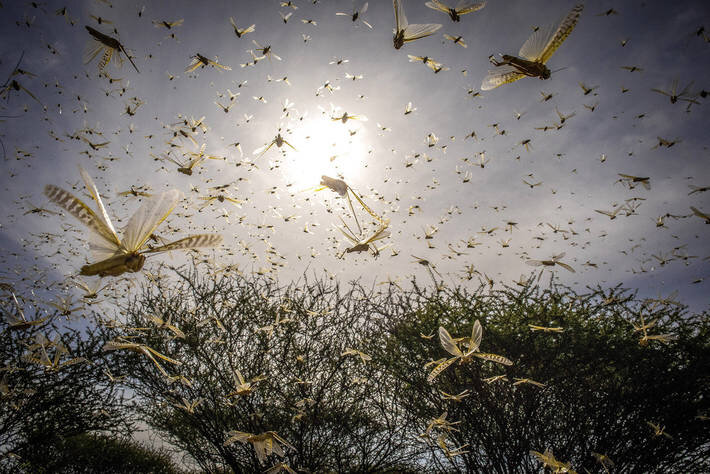Iran warns sanctions hamper regional locust battle

TEHRAN – U.S. sanctions have hampered the implementation of a regional locust control program by Iran, and if the country fails to control the outbreak, the neighboring countries will also suffer, Somayeh Karimdoost, representative of the Iranian Embassy in Pakistan has said.
At a briefing to the diplomatic community by the National Locust Control Centre (NLCC), in Islamabad, she criticized the problems of regional cooperation in controlling the desert locust’s infestation, underling that If the pressures from the coercive approaches against Iran continue and create obstacles in providing poison and spraying planes, other countries, including neighboring ones will bear the consequences.
She called on the World Food Organization and the Food and Agriculture Organization of the United Nations to play a more prominent role in assisting countries in the invasion of desert locusts and facilitating cooperation between them.
Following the influx of locusts into southern parts of the country this year, a total budget of 200 billion rials (nearly $4.7 million at the official rate of 42,000 rials) has been allocated to fight desert locust swarms.
Last year, desert locusts penetrated the provinces of Bushehr, Fars, Hormozgan, Kerman, Khuzestan, and Sistan–Baluchestan, which resulted in major losses on over 500,000 hectares of farmlands and gardens.
FAO explains that desert locust infestations are normally present in southeast Iran during the spring. Local breeding coincides with seasonal rains that often occur from about February or March until April or May. In warmer years, rains that occur during the winter can lead to late winter and early spring breeding.
By June, vegetation is usually dry again and any adults that were produced during the spring move east towards the Indo-Pakistan summer breeding areas. Most of the spring breeding occurs along a 450 km stretch of coastal plains on the Arabian Sea from Jask (Hormozgan) and the Strait of Hormuz and the Gulf of Oman in the west to Chabahar and Gwadar (Sistan-Baluchestan) near the Pakistan border in the east.
The most important area along the coast is the Vashnum Plains near Chabahar. If rains fall and temperatures are warm, breeding may also occur in the interior, namely the Jaz Murian Basin from Kahnuj to Iranshahr, and in the Zaboli, Suran, and Saravan valleys that lead to Panjgur, Pakistan. Desert Locust adults rarely cross the mountains to the north of these areas.
FB/MG
Leave a Comment